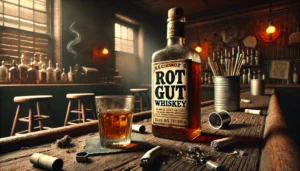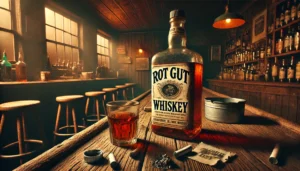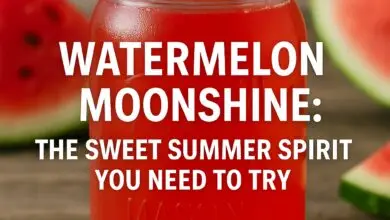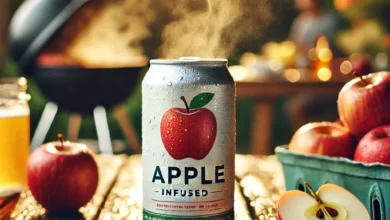Rot Gut Whiskey: A Notorious Spirit with a Rough Reputation
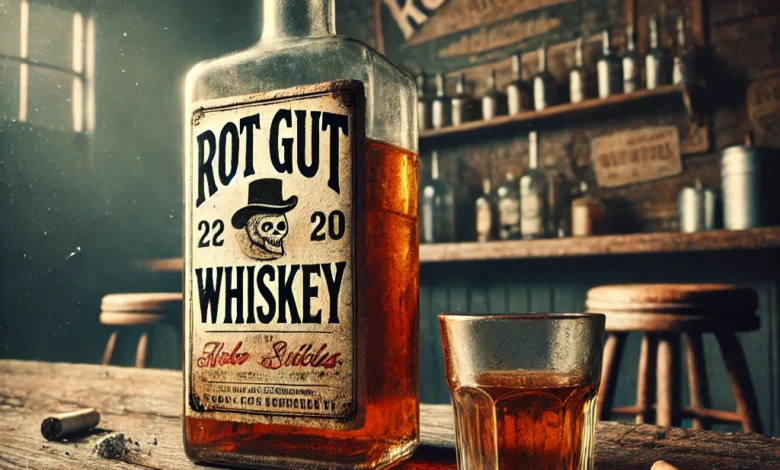
What is Rot Gut Whiskey?
The phrase “rot gut” emerged because alcohol sold this way would “rot your gut” due to its subpar quality and aggressive burning sensation combined with the possibility of contamination. Before modern distillation practices arrived, this alcoholic beverage was typically produced using inadequate materials and basic production methods, which generated an unsmooth spirit that, in some cases, contained dangerous substances.
The preferred alcohol choice during that time was rotgut whiskey.
- During the early 1800s frontier period, many whiskey producers manufactured their spirits while saloons sold poorly distilled products.
- During the period of Prohibition, which lasted between the 1920s and 1933, bootleggers frequently added dangerous materials to whiskey to make it stretch further.
- During early moonshine operations, some unlicensed distillers prepared their products from industrial alcohol, which produced severe health consequences.
Today, the term rotgut whiskey remains in use for discussing cheap alcohol, while laws have eliminated life-threatening hazards that accompanied this drink in the past.
A History of Rot Gut Whiskey
The American Frontier (1800s)
The saloons of the Wild West considered whiskey their fundamental point of service. The majority of whiskey available during that period was unskilled and immature liquor that retained an alcoholic flavour. Unethical businesses that sold whiskey added tobacco juice as well as turpentine and formaldehyde to achieve colouring and flavour effects, which made the product harmful and undrinkable.
Prohibition and Bootlegging (1920s-1933)
The U.S. prohibition on alcohol triggered the closure of legal distilleries, which produced enormous growth in bootlegged whiskey production. Nearly all criminal operations and hidden distillers made their illicit liquor harmfully without observing safety measures. During illegal liquor production, some individuals combined their spirits with methanol together with antifreeze, and industrial alcohol, which caused blindness alongside organ failure and death.
The Moonshine Connection
During Prohibition and throughout the Appalachian, illegal distilling moonshine showed close connections to rot gut whiskey. High-strength or impure moonshine risks serious health problems since most unauthorized distilleries are unregulated. The end of Prohibition did not stop badly produced moonshine from damaging the overall reputation of cheap, unprocessed whiskey.
Characteristics of Rot Gut Whiskey
Rotgut whiskey is easily recognizable due to its harshness and poor quality. Some key characteristics include:
✔ Strong, overpowering burn – Often has a rough, unaged, and high-proof alcohol kick.
✔ Unpleasant smell – May have a chemical or solvent-like aroma due to poor distillation.
✔ Lack of smoothness – Unlike premium aged whiskey, it lacks balance and refinement.
✔ Cheap ingredients – Uses low-quality grains or artificial additives.
✔ Minimal or no ageing – Aged whiskey develops complexity, but rot gut is often rushed to market without proper barrel ageing.
Today, even cheap mass-produced whiskey may be labelled “rot gut” by enthusiasts who prefer well-crafted, aged bourbon, rye, or Scotch.
The Dangers of Rot Gut Whiskey
During historical times, rot gut whiskey posed more than just horrible drinking quality since it frequently proved hazardous to consume. Some of the risks included:
- Methanol in substandard potato-based spirits leads to blindness and possible death.
- Bootleggers resort to putting toxic substances such as formaldehyde together with turpentine and battery acid into their inferior whiskey preparations to achieve imitations of genuine whiskey characteristics.
- High alcohol concentrations harder than 150 proof (75% alcohol) in certain versions made the spirits dangerous for consumption since they caused fast intoxication and alcohol poisoning.
Strict regulation of distillation now prevents dangerous conditions, yet consumers experience unpleasant effects from inexpensive whiskey products alongside harsh aftermaths on their bodies from alcohol content.
Modern Rot Gut Whiskey: Is It Still Around?
While the days of toxic bootleg whiskey are mostly gone, rot gut whiskey still exists in modern form. Today, the term is often used to describe cheap, low-quality whiskey that is:
✔ Mass-produced with little care for flavour
✔ Low-cost, unaged, and high-proof
✔ Mostly meant for quick intoxication rather than sipping
Some well-known brands that some drinkers consider “rot gut” include:
✔ Old Crow – A budget bourbon known for its harshness.
✔ Evan Williams Green Label – Considered low-tier by whiskey lovers.
✔ Ten High – An economy whiskey with a rough profile.
✔ Kentucky Tavern – Inexpensive but often criticized for lack of smoothness.
While not dangerous, these brands lack the refinement of high-quality bourbons, Scotches, or single-malt whiskeys.
How to Avoid Rot Gut Whiskey
If you want to enjoy whiskey without the burn of a low-quality spirit, consider these tips:
✔ Check the Age Statement – Aged whiskey (e.g., at least 4+ years in barrels) is usually smoother.
✔ Look for recognized brands. Well-known distilleries produce reliable quality products.
✔ Avoid Suspiciously Cheap Bottles – Ultra-low prices often mean lower quality.
✔ Read Reviews – Whiskey communities and critics provide insights into taste and quality.
✔ Try Small Batches or Craft Distilleries – Many new distilleries create high-quality alternatives.
Final Thoughts: Is Rot Gut Whiskey Ever Worth It?
While historical rot gut whiskey was a dangerous gamble, modern versions are just cheap, low-quality spirits rather than outright harmful. If you’re looking for a good whiskey experience, spending a bit more on a well-aged, reputable brand will make a huge difference in taste and enjoyment.
